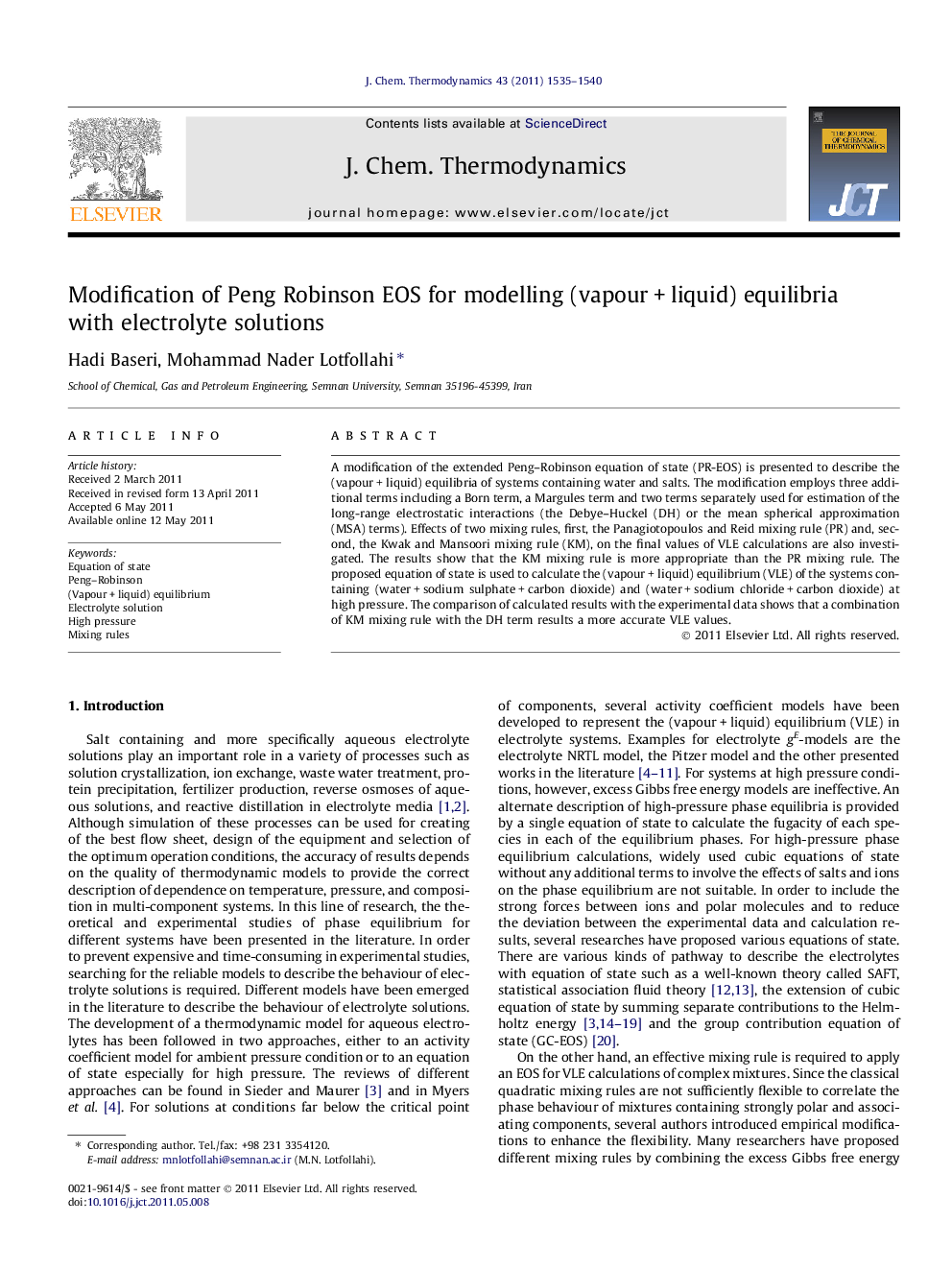| Article ID | Journal | Published Year | Pages | File Type |
|---|---|---|---|---|
| 216483 | The Journal of Chemical Thermodynamics | 2011 | 6 Pages |
A modification of the extended Peng–Robinson equation of state (PR-EOS) is presented to describe the (vapour + liquid) equilibria of systems containing water and salts. The modification employs three additional terms including a Born term, a Margules term and two terms separately used for estimation of the long-range electrostatic interactions (the Debye–Huckel (DH) or the mean spherical approximation (MSA) terms). Effects of two mixing rules, first, the Panagiotopoulos and Reid mixing rule (PR) and, second, the Kwak and Mansoori mixing rule (KM), on the final values of VLE calculations are also investigated. The results show that the KM mixing rule is more appropriate than the PR mixing rule. The proposed equation of state is used to calculate the (vapour + liquid) equilibrium (VLE) of the systems containing (water + sodium sulphate + carbon dioxide) and (water + sodium chloride + carbon dioxide) at high pressure. The comparison of calculated results with the experimental data shows that a combination of KM mixing rule with the DH term results a more accurate VLE values.
► Extended PR-EOS was presented for VLE of H2O/Salt/CO2 systems at high pressure. ► The proposed EPR-EOS is based upon contributions to the Helmholtz energy. ► Born, Margules, and Debye–Huckel or mean spherical approximation terms were used. ► Two different mixing rules Panagiotopoulos and Reid and Kwak and Mansoori (KM) were used. ► A combination of KM mixing rule with DH term results more accurate VLE results.
